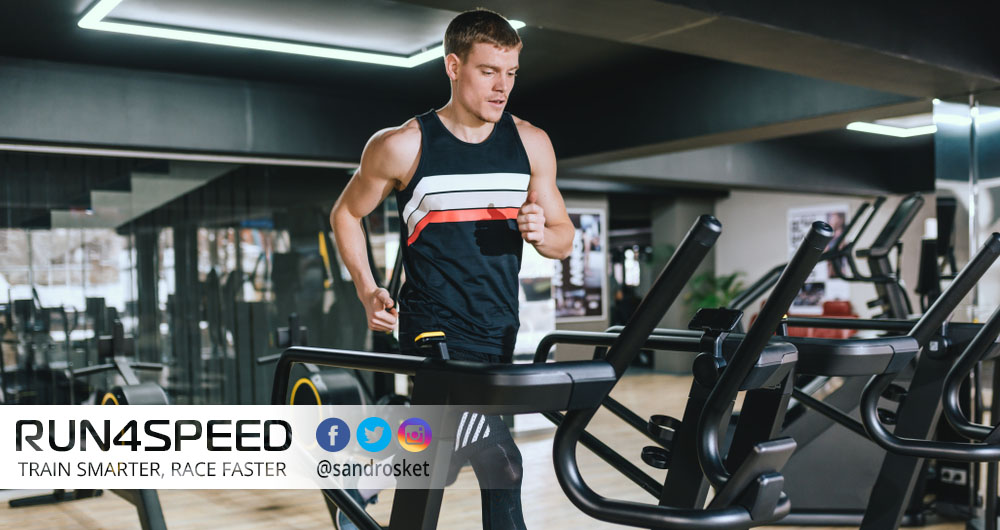Treadmill Workouts for Competitive Runners
We, competitive runners, have a mixed relationship with treadmill workouts. As for the running experience, there is no substitute for being out in nature. But with the winter season kicking in for many of us, it is often the lesser ‘necessary evil’ to continue training – at least on particularly nasty days. In this article, you will learn how to use the treadmill like a professional athlete.
“The treadmill is a brilliant tool for interval training.”
TREADMILL WORKOUTS IN THEORY
First of all, I want you to know that I practice what I preach. I’m temporarily in Munich, Germany and experience the winter myself. There have been days where I ran wrapped in 3 layers, even wearing gloves. But when rain meets the cold or the roads are icy I’m out. Yet that doesn’t mean I skip a running day. Here’s where treadmill training replaces my outdoor sessions.
I recommend to completely ignore all the fancy settings that come with modern treadmills. They’re built for the fitness community having labels like fat-burning zone, cardio zone, and danger zone – whatever that means. Rather, arrive with a purposeful workout planned in advance, bring your heart rate monitor, and follow through like you would at an outdoor session.
Since you have no wind resistance on treadmills, your energy expenditure is roughly 10% less than outdoors, depending on your speed. You can adjust by increasing the speed by 10%. This has the beneficial side-effect of ingraining a faster leg-turnover for any given effort. Alternatively set the treadmill on a 0.5 – 1% incline, or more on some workouts if you want to resemble hill training.
A treadmill is also a fantastic tool for technique training. You don’t have to care about pacing or navigating terrain. Hence, you can channel your focus on the various components of your running technique – one at a time. One caveat is that you’re not utilizing much energy in push-off contact, as the ground is already moving. Counter that by actively swiping the ground under your feet.
TREADMILL WORKOUTS IN PRACTICE
Easy pace should make up at least 80% of your weekly mileage. I’d also recommend having one long run scheduled of 60 – 90min in duration. Unless you are preparing for a marathon you don’t need to go much longer than that. Most of the long run adaptations are capitalized on 60 – 90min. Keep your heart rate between 60 – 70% of your HRR (heart rate reserve).
Threshold runs take a back seat during the off-season as the lactate threshold can be maximized within 6 weeks out of a race. But if you follow a non-linear approach to training then you can maintain this quality with runs that roughly resemble your 15K pace or 85% of your HRR. If you use cruise intervals limit the rest period to 60 – 90sec otherwise the workout will fail its purpose.
VO2max intervals are also de-emphasized during the off-season. But I recommend my athletes to perform 1 VO2max session per week to keep their ‘fitness level’ high year-round. It’s easier to maintain quality than having to build it up from scratch again. 5x 3min at 3K – 5K pace, or 4x 5min at 5K – 10K pace with a work-to-rest ratio of 1:1 or 1:2/3. The rate of perceived exertion is hard.
Strides (accelerations towards maximal speed) are tricky on the treadmill. For one, many treadmills don’t go faster than 11 miles/h (18km/h) and if they do, you run the risk to fly off the back. So I recommend practicing how to catch yourself on the sidebar handles. Your maximal speed is an extremely important yet often undervalued ability. Include strides twice a week into your easy runs.
In summary: Treadmill training is a viable alternative to outdoor running during the winter season – or on extremely hot days if you live in tropical climates. Your primary workout mode should be easy running with a few strides mixed in. A long run and VO2max intervals once a week are optional. Substitute your reduced training mileage with strength and mobility training.
5K Plans | 10K Plans | HM Plans
Sandro Sket, CSCS
Share this article


